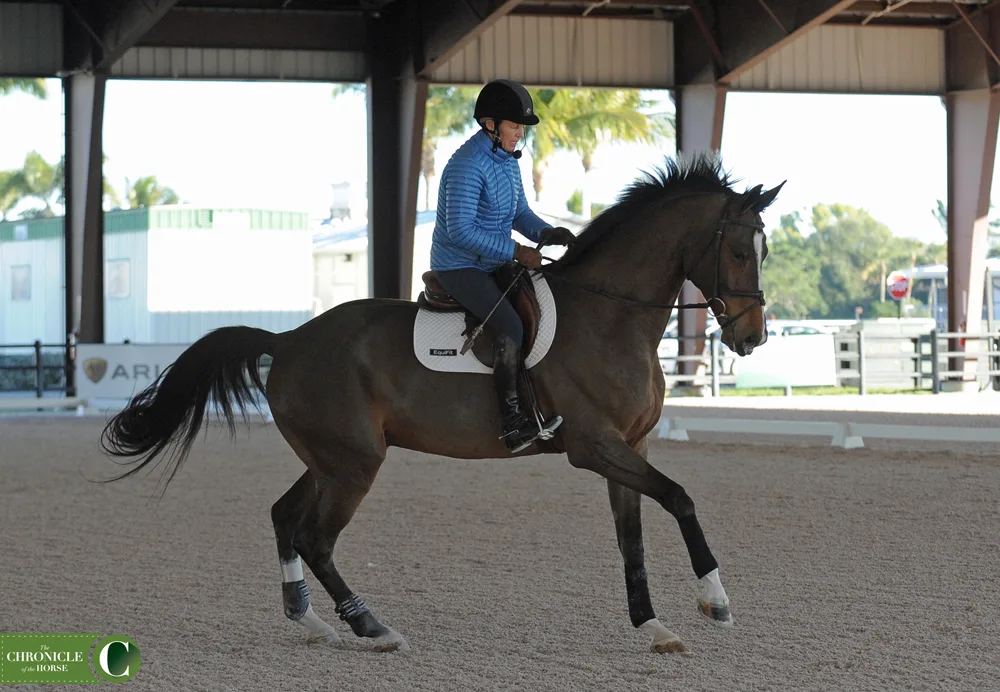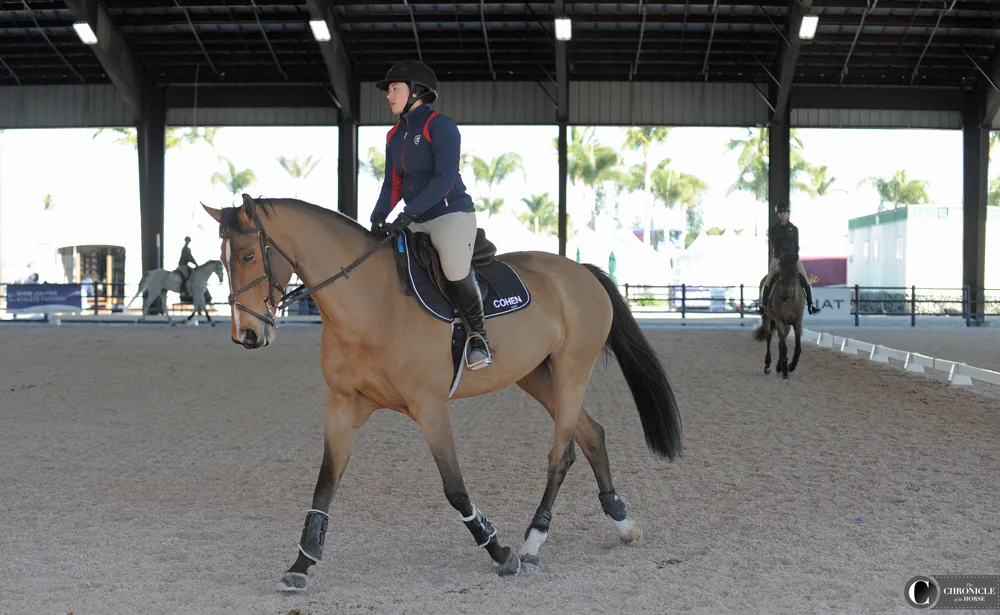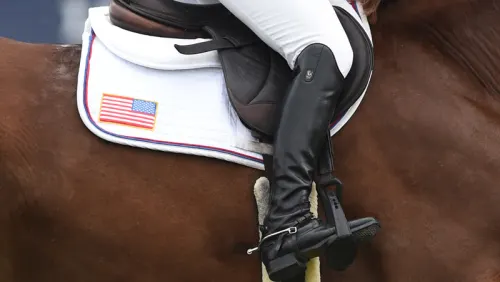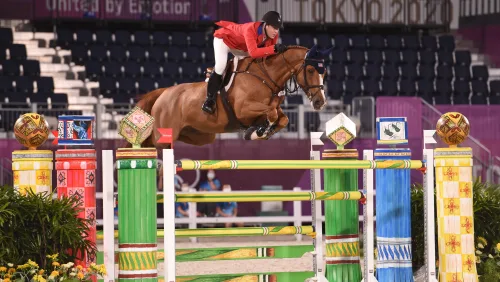Wellington, Fla.—Jan. 5
The annual USEF George H. Morris Horsemastership Training Session kicked off Friday with a flatwork demonstration by Olympic veteran Anne Kursinski. Between explaining the finer points of riding different exercises, Kursinski stressed her overall philosophy when it comes to flatting and training horses.
“You’re always asking yourself, ‘What can I do to make the horse better?’ ” Kursinski said. “You’re always training or untraining, whether you’re aware of it or not. You’re always making it better or making it worse.”
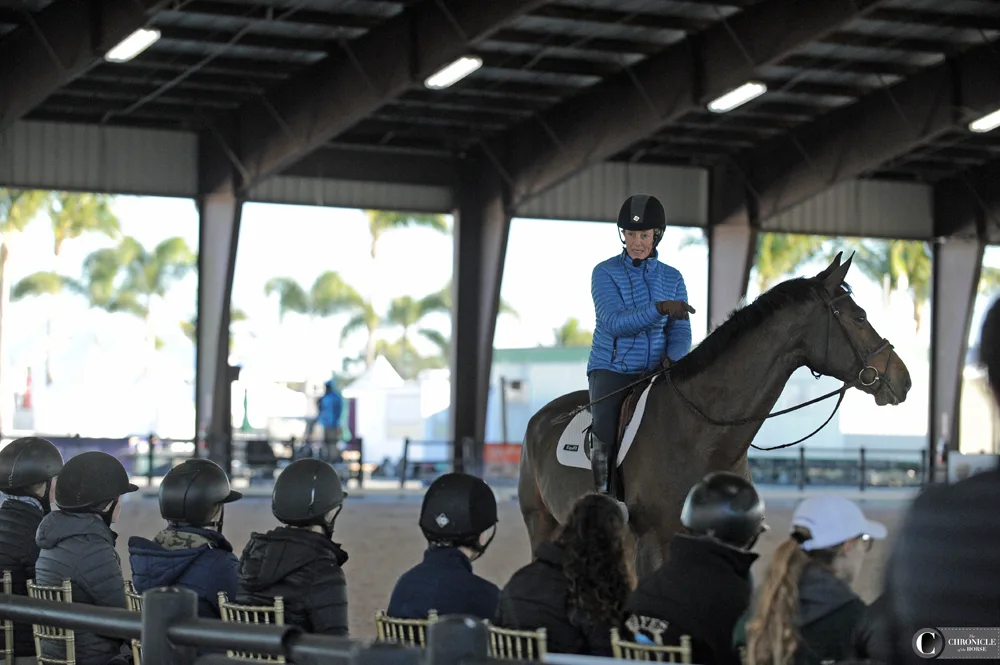
Anne Kursinski explains a point to students in the George H. Morris Horsemastership Training Session. Photo by Ann Glavan.
Kursinski wanted riders to think of their flatwork as a discussion with their horse.
“You’re always listening to the horse; riding is not a one-way conversation,” Kursinski said. “Yes, you have to be strong and have boundaries and discipline, but you listen to him and you reward him when he’s good. As I’m riding it’s a constant conversation, yes to that, no to that, can you be lighter, can you bend more, and you increase and decrease your aids gradually and constantly.”
Kursinski started the morning with a masterful display of flatwork on an equitation horse owned by Two Point Equestrian, Watch Me, a bright-eyed and leggy bay gelding. Particularly impressive was the canter work, where Kursinski was able to get the horse to execute a near perfect half-pass and even perform a couple of pirouettes.
“As I’m doing it, I’m visualizing it. I’m telling him with my body what I’m looking for and that I believe he can do it. I don’t believe he can’t do it,” Kursinski explained.
ADVERTISEMENT
For Kursinski the dressage work is not about getting a pirouette or half-pass that is going to earn a 10 in the show ring—it’s about having an adjustable, correctly engaged horse.
“As far as the dressage, it’s the communication,” she said. “Collection is about engaging the hind legs and lightening the forehand and asking the horse to be in self carriage. I’m not going to carry him around.”
Then Kursinski had her students mount up, and one of the first things she did after they had warmed up was tie everyone’s reins in a knot. This was to give the students a steadier connection with their horses and get the horses to accept the steady, constant contact. A few of the hotter horses resisted this contact with head tossing.
“When they stick their head up like a camel, I resist with my hands, but the correction is with your leg,” Kursinski advised. “You push them up to the bit.”
Kursinski had students do some standard trot work before asking them to drop their stirrups and do leg yields and circles at the trot without their stirrups. At the end of this work Kursinski asked the riders to halt and turn their horses on the forehand.
“This is a test to see if they are really in front of the leg,” Kursinski said. Again some of the hotter horses resisted the movement with little hops or head tossing.
“You make them walk forward if they start getting upset,” she said. “I deepen my seat, I push with my seat, and I stretch my spine. When a horse goes against the leg I don’t lighten my seat and lean forward and get in a weaker position. You get in a stronger position and say, ‘Listen to my leg.’ ”
ADVERTISEMENT
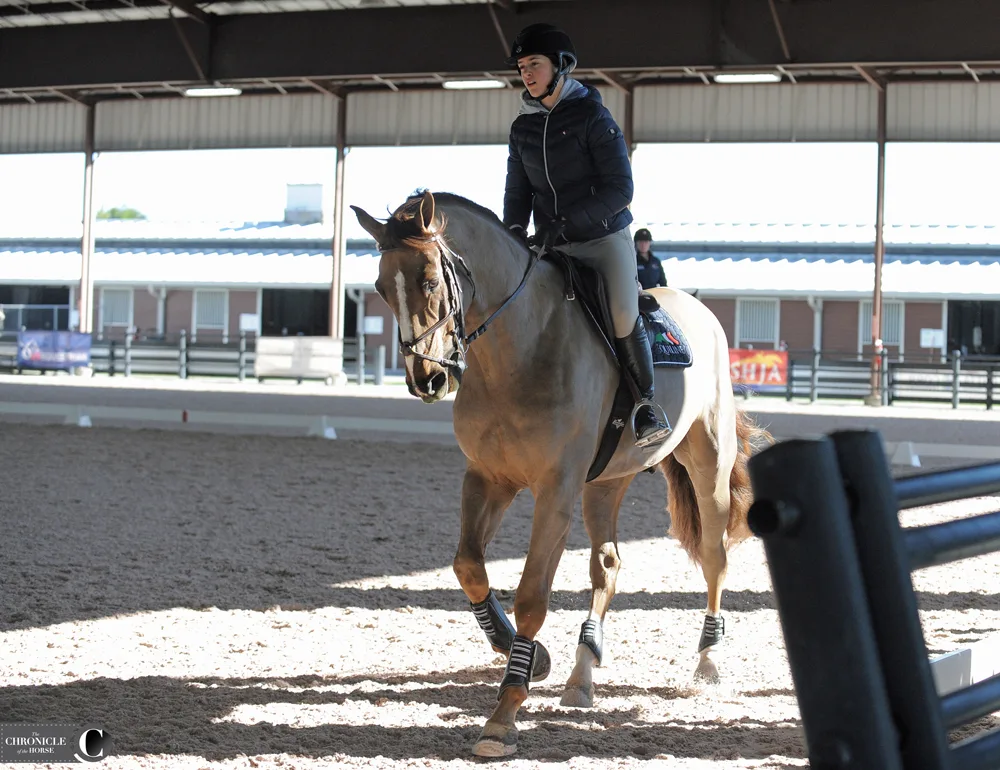
McKayla Langmeier canters down the rail in a flatwork lesson with Anne Kursinski. Photo by Ann Glavan.
Getting the horses truly in front of the leg on the flat is important to Kursinski because she prefers to jump in a half seat.
“Some people feel like they have to sit and they have to drive at the jump, and that’s because the horse isn’t in front of their leg,” Kursinski said. “I’ll sit in front of the jump if I have to, but that’s my last resort. They should be off my leg enough to jump from that position.”
In the canter work Kursinski had students focus on their canter-trot transitions. She asked riders to put their horse in a shoulder-in for the transition.
“In your downward transition you help make the horse straight with shoulder-in. They get lighter; they have to use the hind leg a little more,” Kursinski explained. “It also forces a rider to use their leg to hand in the downward transition instead of just pulling down to it.”
Kursinski helped students with a variety of horses and temperaments, and she left her students with some words of wisdom for how to handle the different horses they’ll come across in their careers.
“Before I went to the Olympics I rode all kinds of horses: big and small, cold and hot, ones that stopped, ran away, stood up on their hind legs,” Kursinski said. “To be a great rider you really should be able to ride all different sizes and shapes, hunters and jumpers, dressage horses. That’s the way I was taught, and I think it makes you a better horseman.”
IMPORTANT LINKS: What You Need To Know | All the COTH coverage | Live Streaming

